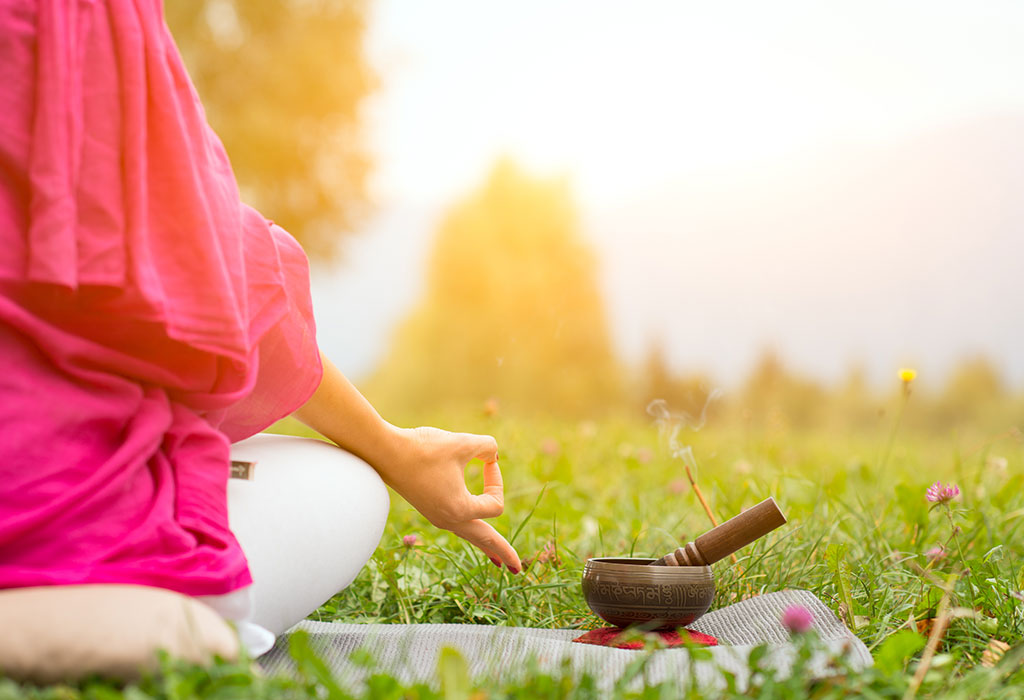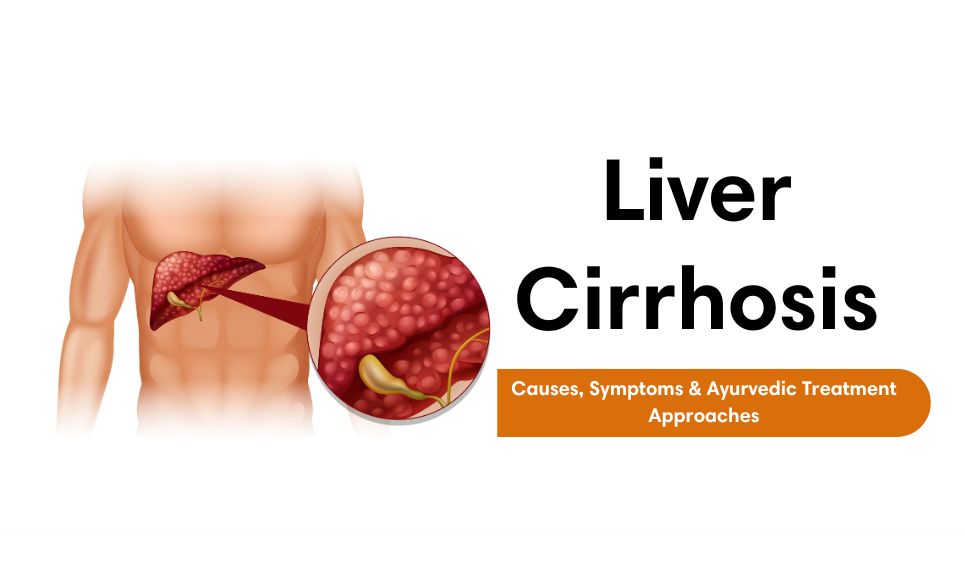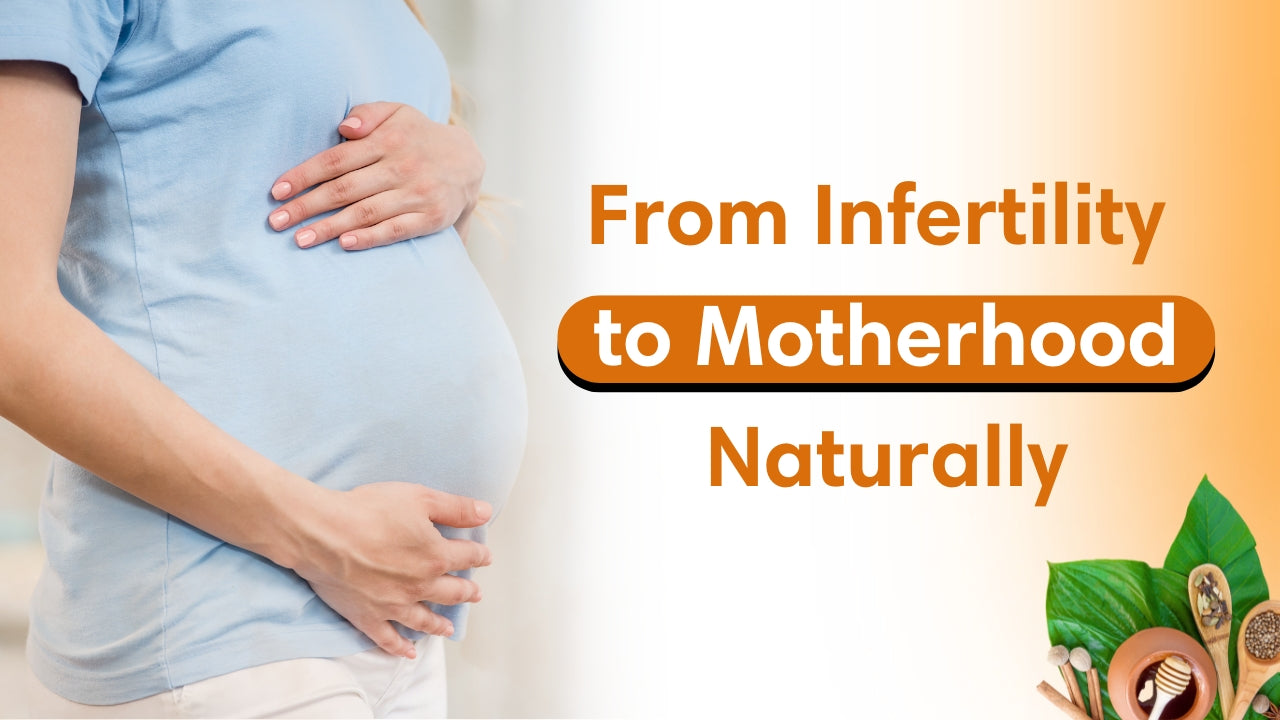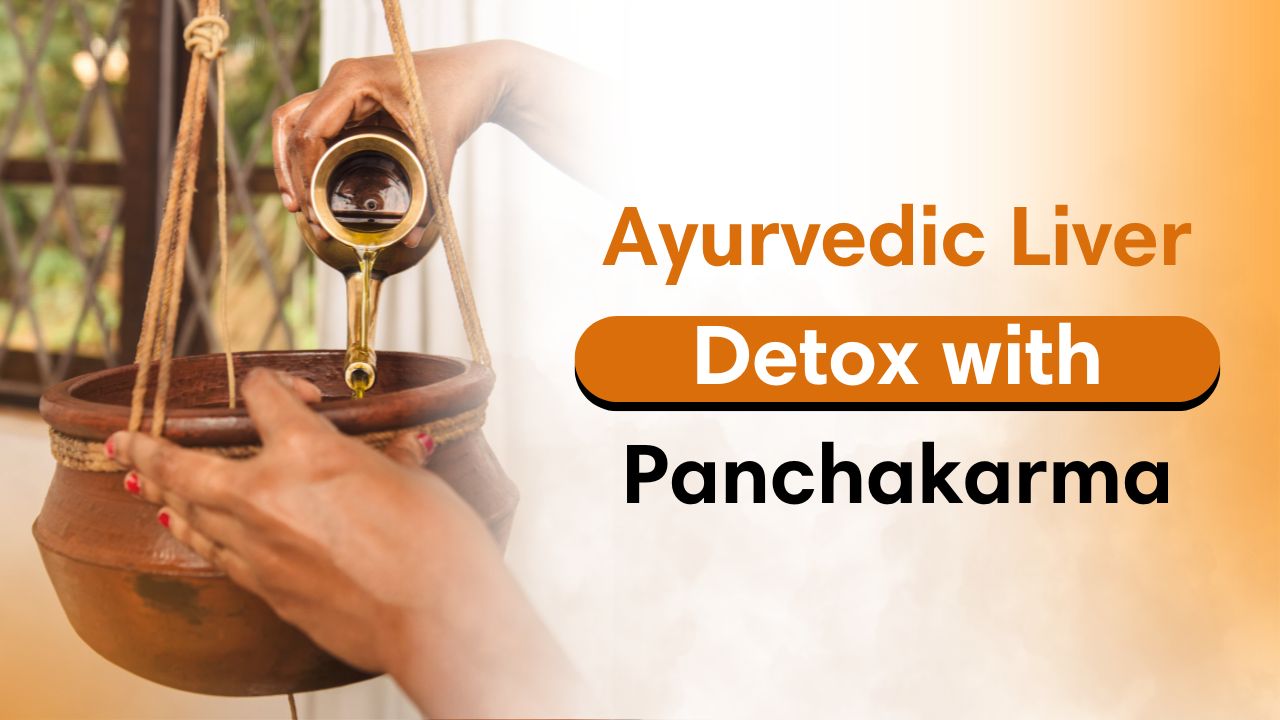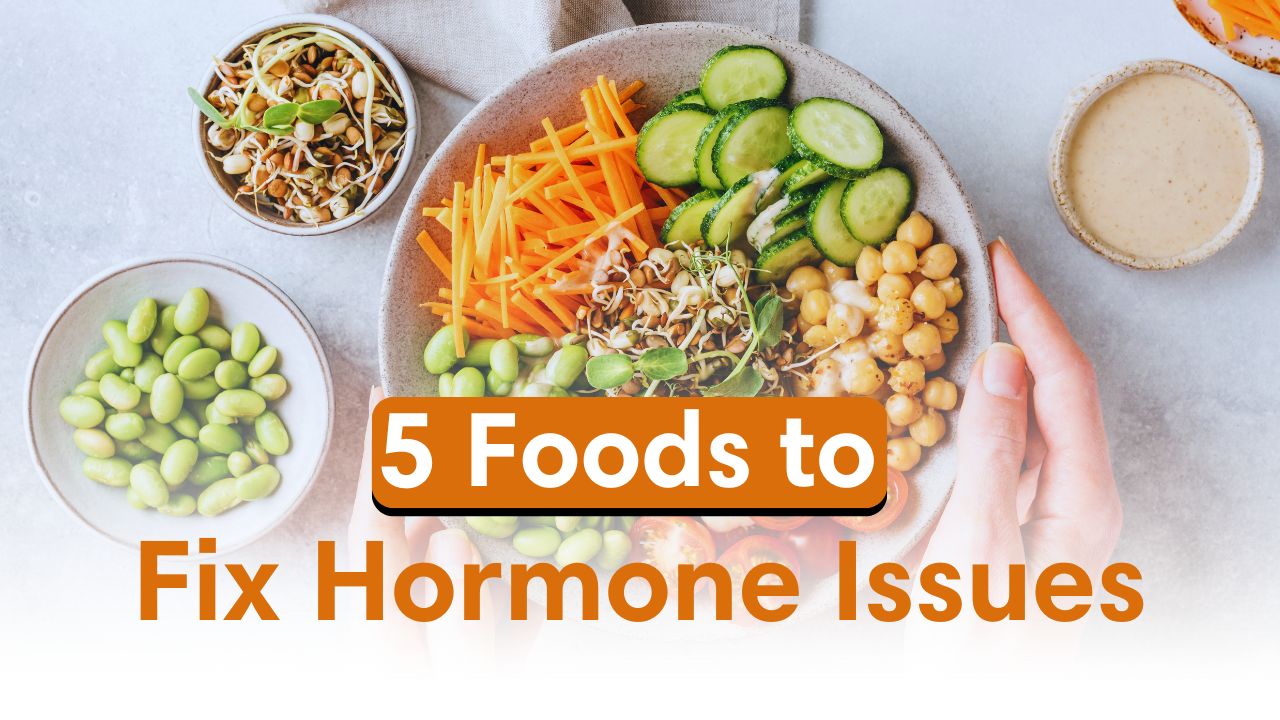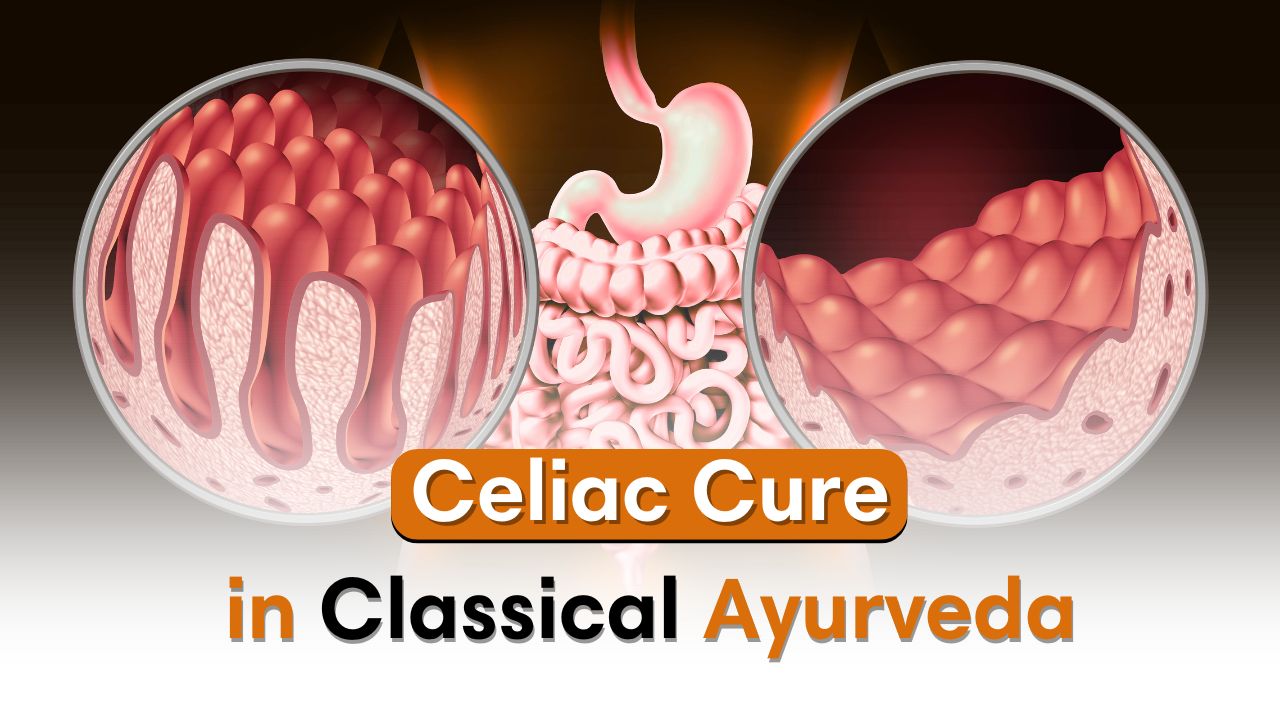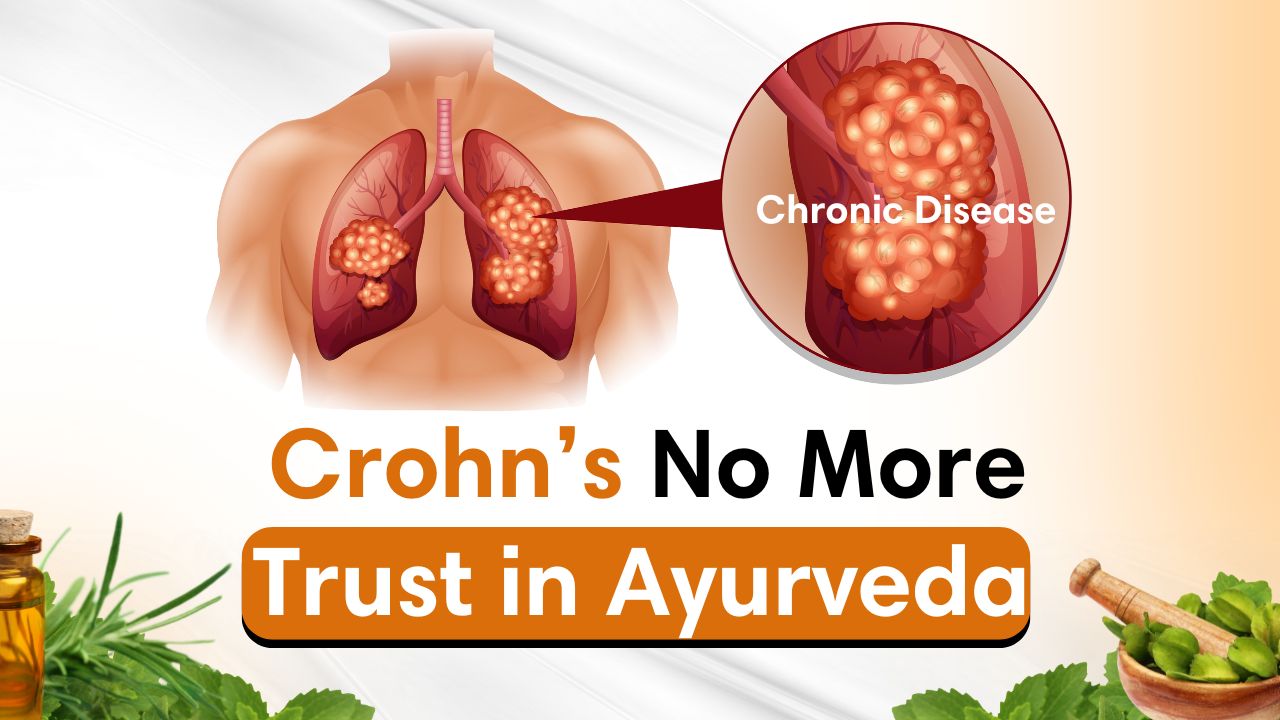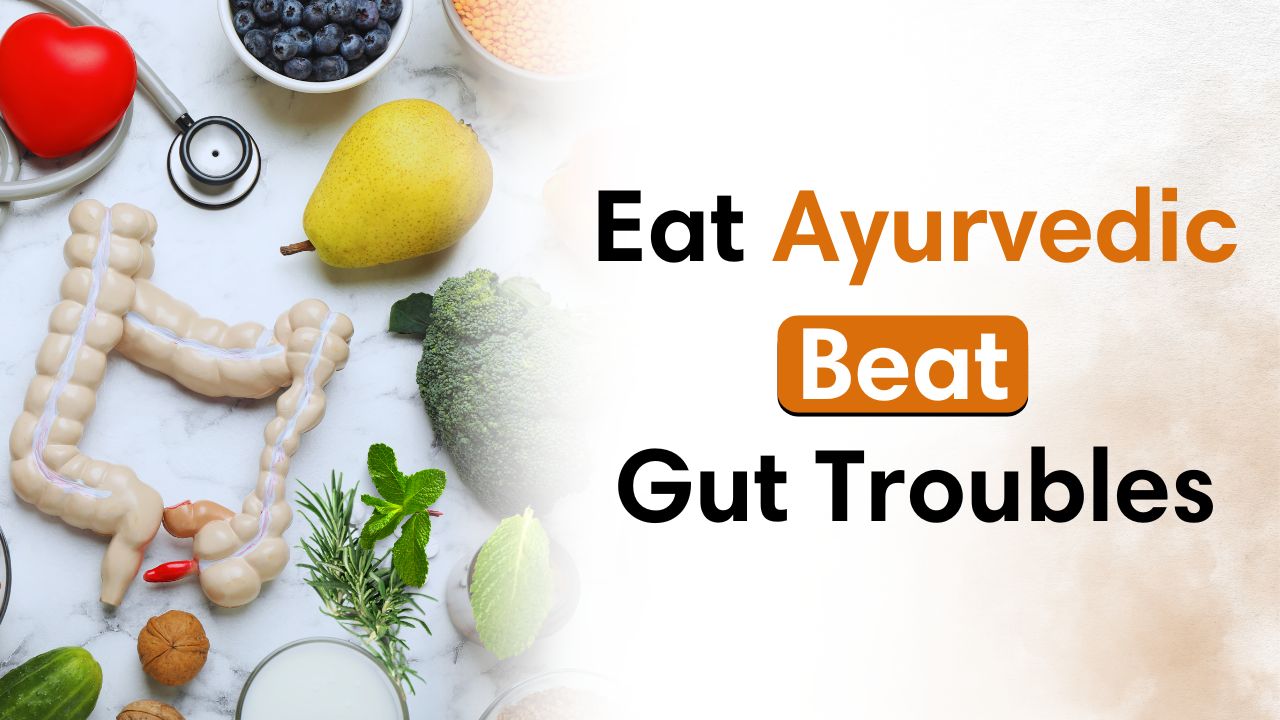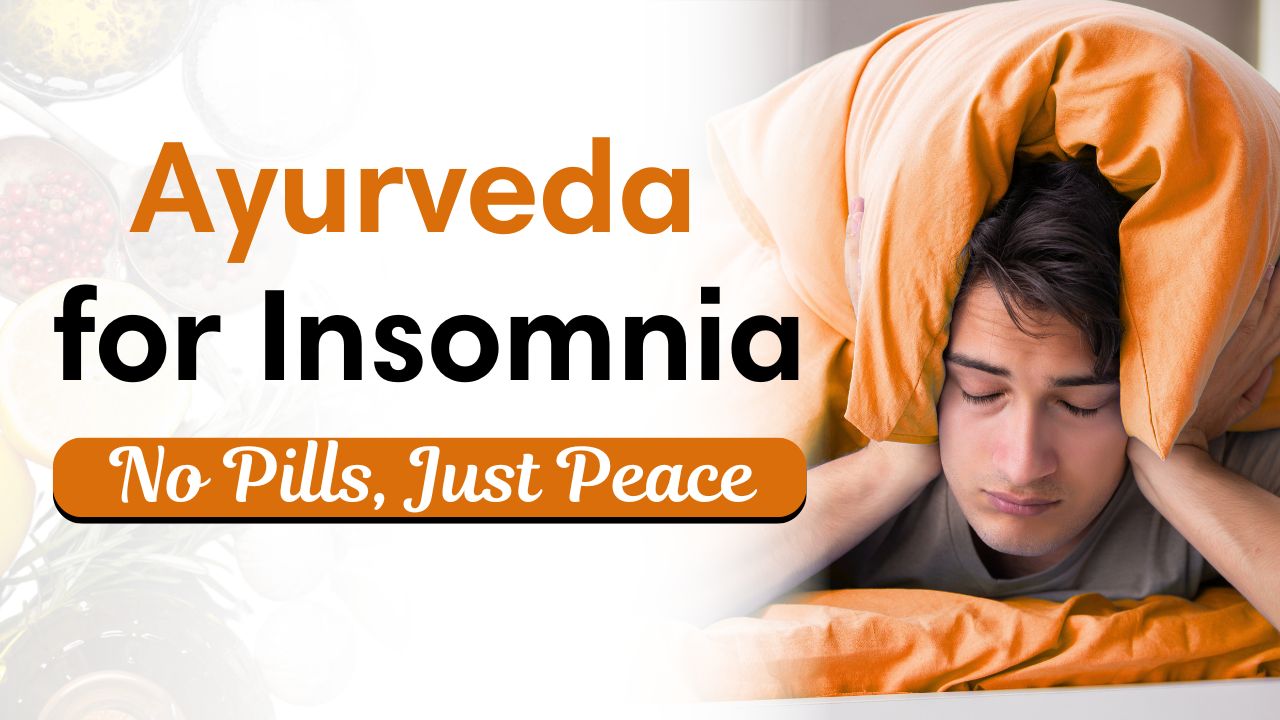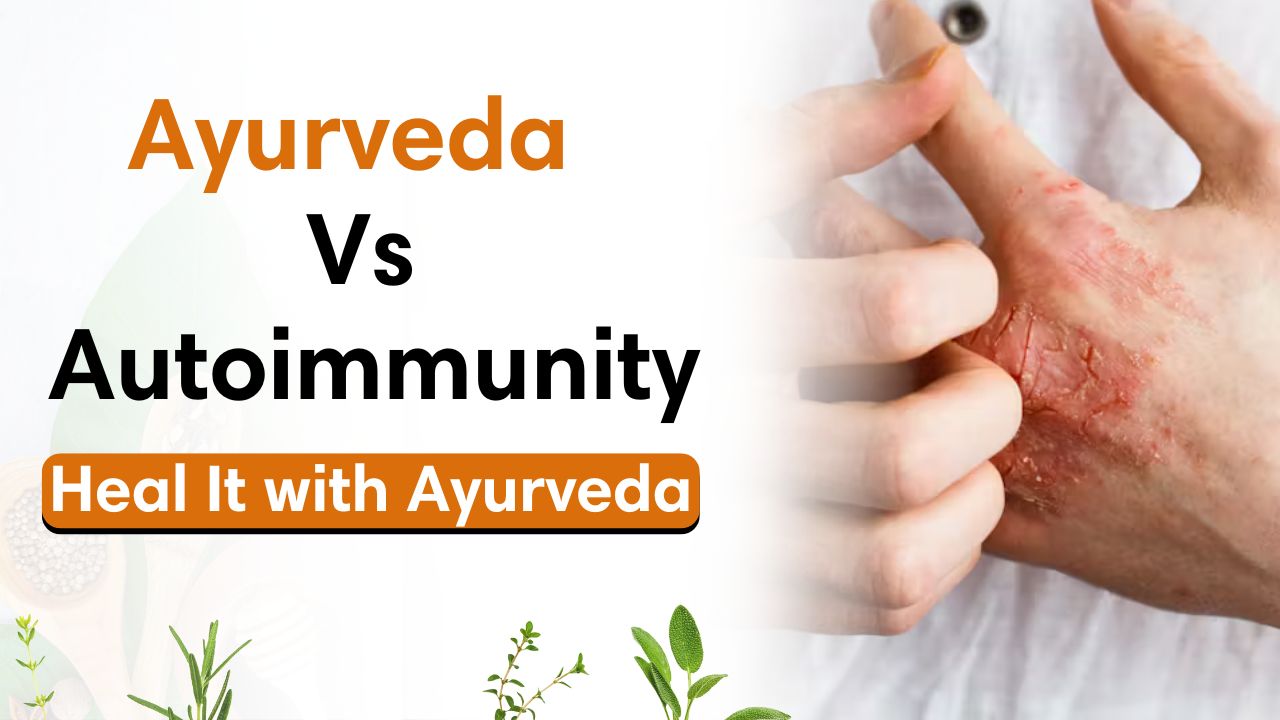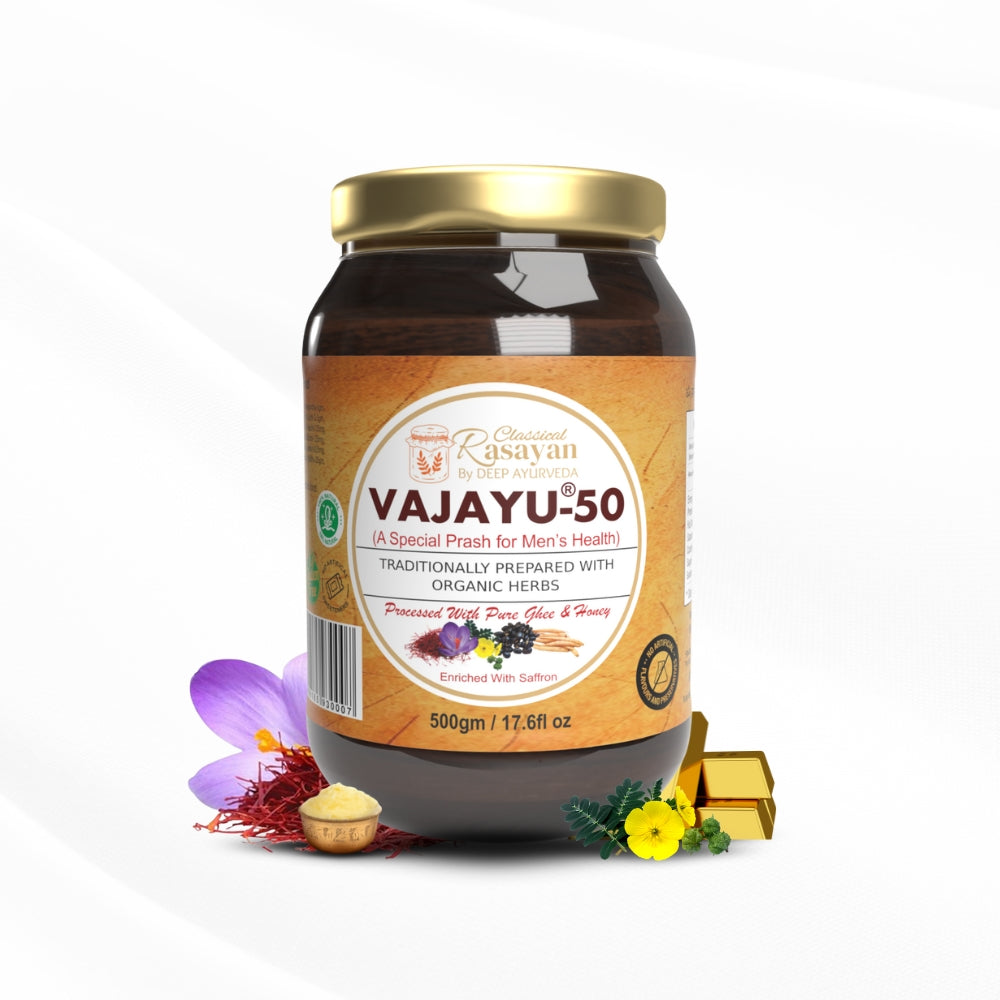News
Ritucharya in Ayurveda: Seasonal Regimen for Lifelong Wellness
According to Ayurveda, our body is governed by three fundamental energies or Doshas—Vata, Pitta, and Kapha. A state of balance among these Doshas ensures health, while their imbalance becomes the root cause of various diseases. Interestingly, these Doshas do not remain static—they fluctuate with seasonal changes. Each season tends to aggravate a particular Dosha, making the body more vulnerable to related disorders. To maintain harmony and prevent seasonal imbalances, Ayurveda recommends a disciplined seasonal routine known as Ritucharya. Ritucharya provides season-specific dietary, lifestyle, and behavioral guidelines that help in pacifying the aggravated Dosha, thereby keeping the body and mind in sync with nature. What is Ritucharya? According to classical Ayurvedic texts the year is divided into six ritus (seasons)- Basant Ritu(Spring Season),Grishma Ritu(Summer Season),Varsha Ritu(Rainy Season),Sharad Ritu(Autumn Season),Hemant Ritu(Winter Season),Shishir Season(Late Winters).Ritu means Season,Charya means Routine, regimen, conduct, lifestyle hence ritucharya means seasonal routine to maintain the three body doshas in equilibrium is called Ritucharya. Basant Ritucharya (Spring regime)- Kapha dosha is aggravated due to the warmth and liquefaction of accumulated Kapha from winter.If not balanced, it may lead to heaviness, congestion, lethargy, and other respiratory and metabolic issues. Ahara (Diet)-Prefer light, dry, warm, and easily digestible foods like Barley, wheat, old rice, green gram (moong dal),Bitter, pungent, and astringent tastes (tikta, katu, kashaya),Honey (natural Kapha pacifier),Spices like black pepper, ginger, turmeric, cinnamonAvoid:Dairy, cold and oily foods, sweets, and heavy food,Excessive sleeping during the day and overeating Vihara (Lifestyle)-Physical activity is crucial—engage in brisk walks, yoga, or light exercise to balance Kapha.Avoid day sleep, as it further aggravates KaphaExposure to mild sunlight is beneficial.Panchakarma Regular abhyanga (oil massage) followed by udvartana (dry powder massage) helps in Kapha shodhana.Nasya and Dhoompan clears excess Kapha from sinuses.Vamana karma (therapeutic emesis) is the primary Panchakarma indicated in Basant Ritu to eliminate aggravated Kapha. Herbs to be used in Basant Ritu-Trikatu,Tulsi,Vasa,Ginger,Honey "वसन्ते कफवृद्धिर्भवति।तस्मात् कफविनाशनं यत् तत्तत् प्रयोज्यम्।तेन शीतेनाधिकं व्यायामः, रुक्षोष्णलघु आहारः।धूमपानं, अभ्यङ्गमुद्वर्तनं, वमनं, गार्शयामश्च उपयोग्याः॥" — Ashtanga Hridaya, Sutrasthana, Chapter 3 "In Vasanta Ritu (spring), Kapha dosha naturally increases. Therefore, all measures that eliminate or pacify Kapha should be practiced—such as increased exercise, intake of light, dry, and warm foods, medicated smoking (Dhoomapana), oil massage (Abhyanga), dry massage (Udvartana), therapeutic emesis (Vamana), and wearing light clothing. Grishma Ritu (Summer Regime)- This period is characterized by intense heat, dryness, and depletion of body strength due to the dominance of Agni (sun/fire element).Vata is mildly accumulated due to dryness and heat.Pitta is in a balanced state but starts to increase.Kapha is reduced, so there’s usually lightness in the body. Ahara (Diet) –Sweet (madhura), Bitter (tikta), Astringent (kashaya) ras pradhan food should be taken.Water-rich fruits like watermelon, cucumber, muskmelon and Cooling foods like rice, milk, ghee should be consumed.Herbal drinks: sharbat, sattu, sugarcane juice, amla juice, buttermilk, coconut water should be added in diet Avoid:Spicy, sour, salty, fermented, and oily foods,Excessive fried and hot foods,Alcohol, caffeine, and carbonated drinks which increases heat and vaat in the body.Vihara (Lifestyle) –Avoid exertion, physical overactivity, and sun exposure during middayWear light, breathable cotton clothing,Use sandalwood paste, rose water, and fragrant flowers for cooling effect.Sleep during night should be adequate; daytime naps are acceptable in this season Panchakarma-Abhyanga (oil massage) with cooling oils like chandanadi taila or coconut oil. 4.Herbs beneficial in Grishma Ritu-Shatavri,Amla,Yashtimadhu,usheer Varsha Ritucharya (Rainy season Regime)- Varsha Ritu (Rainy Season) is the monsoon period, typically occurring from mid-July to mid-September (Shraavana and Bhadrapada months). During this season, the environment becomes damp and cold, Agni (digestive fire) weakens, and Vata dosha becomes aggravated . Ahara (Diet)-Laghu and easily digestible food like moong dal soup, yusha (light gruels).Use of ghee – pacifies Vata.Sour, salty, and mildly spicy foods are beneficial – pacify Vata.Use old grains like rice and barley.Avoid heavy, oily, cold, and raw foods. Vihara (Lifestyle)Massage with medicated oils like Dhanwantharam tailam or Narayana tailam to pacify vaat dosh.Avoid day sleep, excessive exposure to cold wind, and fasting Panchakarma-Abhyanga (oil massage),Basti. Herbs used-Trikatu, Chitrak, Musta to stimulate digestion. वर्षासु जीर्णान्नपानसेवी लघूष्णस्निग्धाहारः | दिवास्वप्नवर्जितः स्यात् पानं जलस्य चाग्निसंस्कृतस्य ||Ashtanga Hridaya – Sutrasthana (Chapter 3: Ritucharya) In the Varsa Ritu (monsoon season), one should consume easily digestible (jīrṇa) food and drinks,Prefer light (laghu), warm (usna), and unctuous (snigdha) food.Avoid daytime sleep (divasvapna).Drink water that has been boiled and cooled, i.e., processed by fire (agnisaṁskrta jala) to maintain digestive strength and prevent disorders. Sharad Ritucharya(Autumn Season) Sharad Ritu is the autumn season, occurring from mid-September to mid-November (Ashwin & Kartik months). This is the time when Pitta dosha becomes aggravated due to the heat of the sun and the previous accumulation in Varsha Ritu. Hence, Pitta-pacifying diet and lifestyle are recommended during this season. Ahara (Diet) – Pitta-Pacifying Food-Sweet (madhura), bitter (tikta), and astringent (kashaya) taste preferred.Cool, light, and easily digestible food items.Avoid sour, salty, spicy, and oily foods. Vihara (Lifestyle)-Avoid overexposure to sunlight and excessive physical activity.Practice Chandana lepana (applying sandalwood paste) to calm body heat.Night awakening and day sleep should be avoided. Panchakarma-Virechan and Raktmokshan is best recommended in this season to expel aggravated Pitta. Herbs used-Avipattikar churna, Draksha, Haritaki, Amalaki शरदि पित्तं प्रकुप्यति तस्मात् पित्तहरं सेवनम् | तिक्तं शीतं कषायं च लघु स्निग्धं च भोजनम् || Charaka Samhita – Sutrasthana Adhyaya 6 (Ritucharya) In Sharad Ritu, Pitta dosha gets aggravated. Hence, one should follow a Pitta-pacifying regimen, Food with sweet, bitter, and astringent tastes is advised in Sharad Ritu to pacify Pitta.Drinking cool water (not cold), especially boiled and then cooled, is beneficial in Sharad Ritu. Hemant Ritucharya(Winter Regime)- Duration of Hemant ritu is Mid-November to Mid-January (Margashirsha & Pausha Months) Ahara-Heavy, warm, unctuous (snigdha) and nourishing (brimhana) foodsSweet (madhura), sour (amla), and salty (lavana) rasa.Ghee, butter, milk, sesame oil.Urad dal, old rice, wheat, barley Avoid-Dry, cold, and light foods,Fasting or skipping meals Vihar-Regular exercise (vyayama) to utilize strong digestive power.Take sunbath (suryasevana) in morning for warmth and vitamin DWear warm clothes, protect from cold winds.Use warm water for bathing Panchakarma-Basti,Abhayang हेमन्ते शीते वायौ स्थूले भूतेऽभितो वृते | जायते बाह्यतः शीतो जठराग्निर् विवर्धते ||Charaka Samhita – Sutrasthana 6 In Hemanta Ritu (early winter), due to the dominance of cold (śīta) and the covering by gross elements (sthūla bhūta).The external cold increases, leading to enhancement of the internal digestive fire (jaṭharāgni). Shishir Ritucharya(Late Winter Regime)- Duration of Shishir ritu is Mid-January to Mid-March (Magha & Phalguna Months) Ahara (Diet Regimen)-Heavy, oily, sweet, sour, and salty foods to pacify Vata.Ghee, sesame oil, milk, jaggery,Wheat, rice, urad dal, meat soup should be used. Avoid:Dry, light, cold, bitter, or astringent foods.Cold drinks, salads, fasting Vihara (Lifestyle Regimen)-Abhyanga (daily oil massage) with til taila (sesame oil).Exercise (vyayama) should continue moderately.Wear warm clothing, protect from wind and cold.Bathe with hot water, apply lepa (herbal paste) if needed.Spend time in sunlight (surya sevan) for natural heat. शिशिरे शीतगुणोत्तर्षात् वायुः प्रकुप्यति सञ्ज्वरः |लघु तिक्तं कषायं च रुक्षं भोजनमुच्यते ||Charaka Samhita – Sutrasthana Adhyaya 6 (Ritucharya) Due to the extreme cold quality in Śiśira Ritu, Vata dosha becomes aggravated.Therefore, one should take unctuous, heavy, warm, and sweet food during shishir ritu. Conclusion- Ritucharya, the seasonal regimen described in Ayurveda, is a profound and practical approach to maintaining health and preventing disease by living in harmony with nature's rhythms. Each season brings specific changes in climate that influence the balance of doshas (Vata, Pitta, Kapha) in the body. By adjusting our diet, lifestyle, and routines according to seasonal changes, we can enhance immunity, improve digestion, and maintain physical and mental well-being.
Read moreNews
Best Ayurvedic Chyawanprash for Men’s Sexual Health
💪 Boost Your Power Naturally! | Top Rated Ayurvedic Medicine for Sex Power ✅1+ Lakh Customer Trust ✅ 100% Ayurvedic & Safe ✅ Boosts Energy & Strength ✅ Improves Stamina & Confidence ✅ Supports Hormonal Balance ₹1499.00 ₹1874.00 Buy Now Discover the top 5 powerful formulations that nourish men's vitality naturally. When it comes to enhancing men’s sexual health naturally, Ayurvedic Chyawanprash stands out as a time-tested, holistic remedy. Known for its rejuvenating properties, Chyawanprash is much more than a traditional immunity booster—it’s also a potent Rasayana that can support male reproductive health, stamina, and vitality. If you’ve been searching for the best Ayurvedic Chyawanprash that promotes energy, vigor, and hormonal balance, this article is for you. We’ll explore five leading brands, including Deep Ayurveda’s Vajayu 50 Prash, and their unique herbal formulations crafted specifically to boost men’s sexual health. Why Ayurvedic Chyawanprash for Men’s Sexual Health? Ayurvedic Chyawanprash is an ancient herbal jam made from a blend of Rasayana herbs, Amla (Indian gooseberry), and a wide range of Vaji-karana dravyas (aphrodisiac herbs). These ingredients: Enhance testosterone levels naturally Improve stamina and libido Strengthen Shukra dhatu (reproductive tissue) Support nervous system and stress management Ayurveda believes that a well-nourished Shukra dhatu leads to enhanced sexual health in men. With regular use, the right chyawanprash can be an excellent daily tonic to enhance overall wellness and reproductive strength. 1. Deep Ayurveda Vajayu 50 Prash – Best Ayurvedic Chyawanprash for Men’s Sexual Health Vajayu 50 Prash by Deep Ayurveda is a highly specialized Ayurvedic Chyawanprash formulated to revitalize men’s physical and reproductive health. Enriched with over 50 potent herbs, this Rasayana strengthens stamina, supports hormonal balance, and enhances sexual confidence. Key Ingredients: Shilajit – Natural testosterone booster Ashwagandha – Reduces stress & enhances sperm quality Safed Musli – Improves strength & endurance Kaunch Beej – Supports sperm count and motility Amla – Rich antioxidant to improve immunity Gokshura & Shatavari – Support reproductive wellness Kesar - Enhancing vigor and libido and is a Rasayan Gold bhasma - Rejuvenates all seven dhatus (body tissues), especially Shukra Dhatu (reproductive tissue) Why Vajayu 50 Prash? 100% classical Ayurvedic formulation No added sugar or artificial flavors only natural jaggery and Desi Cow Ghee is used Recommended by Ayurvedic doctors for men’s reproductive health Strengthens body tissues from within Deep Ayurveda’s Vajayu 50 Prash is widely endorsed by men’s sexual health doctors and is ideal for modern men facing fatigue, stress, and hormonal imbalance. 2. Zandu Kesari Jivan Chyawanprash Zandu's premium chyawanprash variant, Kesari Jivan, is known for its energizing effect, especially for aged individuals and working men. It is a gold-enriched Ayurvedic Chyawanprash with a luxurious formula. Key Ingredients: Kesar (Saffron) – Boosts stamina & sperm health Amla – Supports immunity & detoxification Shilajit – Enhances male vitality Ashwagandha – Reduces anxiety and improves performance Highlights: Good for men over 40 experiencing fatigue Mildly sweet and palatable taste Regularly recommended by men’s sexual health doctors for general vigor While it’s not exclusively for male sexual health, Zandu Kesari Jivan provides excellent foundational nourishment. 3. Dhootpapeshwar Swamala Chyawanprash A powerhouse Rasayana, Swamala by Dhootpapeshwar is a rich, ghee-based Ayurvedic Chyawanprash infused with premium herbs and Suvarna Bhasma (gold ash) for deep rejuvenation. Key Ingredients: Suvarna Bhasma – Rejuvenates body tissues Makardhwaj – Renowned aphrodisiac compound Shatavari & Ashwagandha – Adaptogens for strength Amla, Pippali, Vanshlochan – Classic immunity and digestion support Ideal For: Men with chronic fatigue and low libido Those undergoing post-illness recovery Daily Rasayana for sexual vitality Swamala is considered a heritage product in Ayurveda and is often prescribed for men’s sexual health and mental rejuvenation. 4. Charak Pharma Chyawanprash Avaleha Charak Pharma offers a traditional-style Ayurvedic Chyawanprash that is rooted in classical Ayurvedic formulations. It’s effective for building immunity, vigor, and mental strength. Key Ingredients: Vidarikand & Gokshura – Enhance reproductive wellness Amla – Strengthens Ojas Pippali & Guduchi – Detox and metabolism boosters Shatavari – Enhances hormonal balance Suitable For: Young men needing preventive care Daily nourishment for sperm and semen quality Mild support for sexual health and energy Though not as potent as Vajayu 50 Prash, Charak's chyawanprash is still a solid Rasayana choice for male wellness. 5. Dabur Chyawanprash The most recognized brand in India, Dabur Chyawanprash is a household staple. While it is not solely designed for sexual health, its wide range of herbs indirectly supports men’s sexual health and overall vitality. Key Ingredients: Amla – Core rejuvenator in Ayurveda Pippali – Enhances digestion and bioavailability Bala, Vidari, and Shatavari – Mild reproductive tonic herbs Pros: Easily available Affordable daily tonic for immunity & strength Helps build a base for more targeted therapies If you’re starting out and looking for an entry-level Ayurvedic Chyawanprash, Dabur can be a good foundation, though not a dedicated men’s sexual health tonic. How to Take Ayurvedic Chyawanprash for Sexual Health For best results: Take 1–2 teaspoons daily with warm milk or lukewarm water Morning or evening on an empty stomach is ideal Follow it regularly for 2–3 months for visible improvements Consult a certified men’s sexual health doctor for chronic issues Key Benefits of Using Ayurvedic Chyawanprash for Men’s Sexual Health Enhances Shukra Dhatu (reproductive fluid) Improves testosterone and sperm health Boosts stamina, libido, and performance Reduces stress, anxiety, and fatigue Supports immune and digestive systems With rising stress and poor lifestyle habits affecting male health today, switching to a daily dose of Ayurvedic Chyawanprash can work wonders—not just for immunity, but also for long-term hormonal health. Choose the Right Chyawanprash Wisely While all the above brands offer great value, Deep Ayurveda’s Vajayu 50 Prash ranks highest as the best Ayurvedic Chyawanprash for men’s sexual health. It’s specially formulated with classical Vajikarna herbs to naturally improve reproductive power, stamina, and mental clarity. Whether you're facing issues like low energy, poor libido, or fatigue, Vajayu 50 Prash is your ideal companion. Other premium options like Swamala, Zandu Kesari Jivan, Charak, and Dabur also contribute to overall wellness and are recommended for different needs and age groups. When in doubt, always consult an experienced men’s sexual health doctor to choose the right Rasayana for your unique constitution (Prakriti) and health goals.
Read moreLiver Cirrhosis: Causes, Symptoms & Ayurvedic Treatment Approaches
Liver cirrhosis is a chronic liver condition marked by irreversible scarring of liver tissue, which affects its vital functions. Whether caused by alcohol, viral infections, or metabolic disorders, cirrhosis of the liver can lead to life-threatening complications if not addressed early. While modern medicine offers several liver cirrhosis treatment options, Ayurveda—India’s ancient healing system—also provides holistic approaches to manage liver health and improve quality of life. What Is Liver Cirrhosis? Liver cirrhosis occurs when long-term damage to the liver leads to fibrosis (scarring), reducing blood flow and impairing liver function. The liver becomes unable to filter toxins, process nutrients, or produce proteins essential for blood clotting and digestion. This condition is progressive and, in many cases, irreversible. However, early detection and a combination of conventional and Ayurvedic therapies can help manage the symptoms and slow down disease progression. Causes of Cirrhosis of the Liver The most common causes of liver cirrhosis include: Chronic alcohol abuse Hepatitis B and C infections Non-Alcoholic Fatty Liver Disease (NAFLD) Autoimmune hepatitis Genetic liver diseases like Wilson's disease or hemochromatosis Environmental toxins, prolonged use of certain medications, and unhealthy diet and lifestyle habits may also contribute to liver damage. Symptoms of Liver Cirrhosis In its early stages, cirrhosis of the liver may show no signs. As the disease advances, symptoms may include: Fatigue and weakness Yellowing of the skin and eyes (jaundice) Abdominal swelling (ascites) Itchy skin and easy bruising Nausea or loss of appetite Confusion or difficulty thinking clearly (hepatic encephalopathy) Modern Liver Cirrhosis Treatment Conventional liver cirrhosis treatment focuses on: Addressing the root cause (e.g., antiviral drugs for hepatitis, stopping alcohol use) Slowing disease progression Managing complications like portal hypertension and infections Liver transplantation in end-stage cases Doctors also recommend lifestyle changes such as reduced salt intake, avoiding alcohol, and regular monitoring. Ayurvedic Perspective on Liver Cirrhosis In Ayurveda, liver cirrhosis is often linked to an imbalance in the Pitta dosha, which governs metabolism, digestion, and heat in the body. Liver disorders are broadly categorized under "Yakrit Roga." Key Ayurvedic Concepts Related to Liver Cirrhosis: Pitta aggravation leads to inflammation and overheating in the liver. Ama (toxins) accumulate due to poor digestion, weakening liver function. Improper lifestyle and dietary habits aggravate liver imbalances. Ayurvedic Liver Cirrhosis Treatment Includes: 1. Herbal Remedies Kutki (Picrorhiza kurroa): Supports liver detox and reduces inflammation Bhumyamalaki (Phyllanthus niruri): Effective in hepatitis and liver regeneration Kalmegh (Andrographis paniculata): Anti-inflammatory and hepatoprotective Punarnava (Boerhavia diffusa): Helps reduce fluid retention and ascites 2. Panchakarma Detoxification Cleansing therapies like Virechana (therapeutic purgation) help remove excess Pitta and toxins, rejuvenating liver function. 3. Diet & Lifestyle Adjustments Light, warm, and easily digestible food Avoidance of oily, spicy, and fermented foods Use of turmeric, aloe vera juice, and fresh amla (Indian gooseberry) Regular yoga and breathing exercises (pranayama) 4. Rasayana (Rejuvenation) Therapy These therapies aim to restore liver tissues and strengthen overall immunity using specific Ayurvedic formulations. Preventing Liver Cirrhosis: Ayurvedic Tips Follow a Pitta-pacifying diet: cooling herbs, ghee, and bitter vegetables Detox regularly with herbal teas (e.g., coriander, fennel, cumin) Practice abhyanga (oil massage) and meditation to reduce stress Stay hydrated and maintain a regular eating schedule Avoid alcohol, smoking, and late-night eating Conclusion Liver cirrhosis is a serious but manageable condition when approached holistically. Combining modern liver cirrhosis treatment with Ayurvedic principles can offer a balanced path to recovery. By correcting imbalances, detoxifying the body, and adopting a liver-friendly lifestyle, it is possible to slow disease progression and enhance overall wellness. Whether you’re seeking to prevent cirrhosis of the liver or manage existing symptoms, a blend of medical and Ayurvedic guidance can make a meaningful difference.
Read moreFemale Infertility: A Holistic Ayurvedic Journey to Motherhood
The WHO (World Health Organization) that approximately 1 in 6 people globally experience infertility in their lifetime. Infertility rates generally increase with age, especially in women, where the quality and quantity of eggs decline with age. Infertility or Bandhyatva Infertility is defined as the inability to conceive a pregnancy after 12 months of regular, unprotected intercourse. It can be primary (if the woman has never conceived) or secondary (if she has conceived before but is now unable to conceive). In Ayurveda, infertility is referred to as Vandhyatva (वन्ध्यत्व). It is defined as: "आर्तवदोषाद् वा योनिदोषाद् वा गर्भाशयावरणाद् वा न गर्भं धारयति सा वन्ध्या।" चरक संहिता, चिकित्सा स्थान ३०/२०) A woman is called Vandhya (infertile) if she is unable to conceive due to: Vitiation of Artava (menstrual blood or ovum) Disorders of the Yoni (reproductive tract) Obstruction in the Garbhashaya (uterus) Causes of Infertility in Females- Hormonal Imbalance Low egg quality or small size follicles Polycystic Ovary Syndrome (PCOS) Uterine Fibroids Tubal Blockage Low AMH Level Lifestyle Factors like Stress, smoking, alcohol, excessive exercise,Obesity or being underweight,Nutritional deficiencies Bandhyatva Nidan- According to Ayurveda, successful conception (Garbhasambhava) requires the proper functioning of four factors: Ritu (Fertile period) Kshetra (Healthy uterus) Ambu (Proper nutrition or rasa dhatu) Beeja (Healthy ovum and sperm Other causes- Dosha Imbalance(mainly pitt dosh vitiliation causes bandhyatva) artav vah strotodusthi(menstrual cycle disturbance) Ahar-Viharaja Factors (Diet and Lifestyle) Manasika Nidana (Psychological Factors) Types of Vandhyatva (Infertility) in Ayurveda "सप्तधा वन्ध्या प्रोक्ता दोषतो गर्भनाशनात्। पुंसो दुष्टात् स्त्रियाश्चैव गर्भाशयापवर्तनात्॥ स्राविणी च क्षतार्तव्या पुष्यन्ती चापि रक्तिनी। एता वन्ध्या भवत्येव सप्तधा नात्र संशयः॥"— हरित संहिता, स्त्रीरोगाधिकार, अध्याय 2 Dosaja Bandhya-due to imbalance of doshas Stridusta-due to any disorder in female reproductive system, Garbhasayapavrttta-due to misplaced uterus from its position for eg in uterine prolapse Garbhanasaja- due to recurrent miscarriages Pumsodusta- due to male sperm deformities Sravini- Heavy or prolonged bleeding (menorrhagia type infertility)। Ksataatavya- when body Fails to nourish the embryo after conception, leading to early miscarriage or infertility. Modern Techniques for Female Infertility Ovulation Induction- Stimulate ovulation in women who do not ovulate regularly or at all. Intrauterine Insemination (IUI)-processed (washed) sperm is injected into the uterus during ovulation. In Vitro Fertilization (IVF)-Eggs are retrieved from the ovaries and fertilized in the lab. The resulting embryo is then transferred into the uterus.7. 4)Surrogacy-Embryo is created using the intended parents’ or donors’ gametes and implanted into a surrogate mother. Holistic Ayurvedic Approach to Female Infertility Ayurveda not only treats Infertility it also enhance fertile health of a female through beej suddhi hence not only infertile couples but a normal couple without any cause of infertility planning for baby should go for beej suddhi for a better progeny. Ayurveda adopts a comprehensive treatment plan involving herbal medicines, Panchakarma therapies, diet corrections, yoga, and stress management. 1)Sodhan Chikitsa- Detoxification treatments help remove deep-rooted toxins (ama) and restore reproductive health: Vamana (Therapeutic emesis) – Removes excess Kaph .In condition like PCOD, Obesity, tubal blockage vaman plays a significant role. Virechana (Therapeutic purgation) –.Vitiation of pitt dosh is a main causative factor for Infertility in maximum females and also causes recurrent Miscarriages in many females as due to excessive heat garbhasya is unable to hold the fetus..Virechan plays a significant role in such condition by balancing the excessive pitt from body. Nasya(administration of medicated oil through nose)-Nasya stimulates the hypothalamus-pituitary-ovarian (HPO) axis by acting through the nasal-brain connection. This can regulate menstrual cycles, ovulation, and hormonal imbalances. Raktmokshan-blood detoxification should be done by sirabhed raktmokshan procedure where 30 40 ml blood letting is done .In females with excessive pitt in their body are at a risk of infertility so by performing raktmokshan the excessive heat in blood is removed through this procedure. Basti (Medicated enema) – Especially effective in Vata-related infertility,where Vitiation of apan vayu rajavahastrotodushti. Shirodhara- is a classical Ayurvedic therapy where a continuous stream of medicated oil, decoction, or milk is gently poured over the forehead .It plays a powerful supportive role in infertility treatment, especially when the cause is linked to Stress and anxiety, Hormonal imbalance Uttar Basti: A Powerful Ayurvedic Therapy for Uterine Health “बस्तिश्चोत्तरो यः स्यात् स्त्रीपुंसोर्भववर्जितः।”— Charaka Samhita, Siddhi Sthana Uttar Basti refers to the administration of medicated oil or decoction into the uterus (female) or urinary bladder/urethra (male) via the vaginal or urethral route Uttar basti through vaginal route is administered for the nourishment of endometrial lining of uterus. Indications of Uttar Basti in Females Bandhyatva (Infertility) Garbhasrava / Garbhapata (Recurrent miscarriages) Cervical erosion Uterine fibroids (as supportive care) Tubal blockage Procedure of Uttar Basti- Purva Karma (Pre-Procedure):Snehan (oleation) and Swedan (fomentation) of lower abdomen,Bowel and bladder should be emptiedPradhana Karma (Main Procedure):Medicated oil (2-3 ml)(phalghrit) is introduced into the vaginal canal or uterine cavity using a sterile catheter/syringe ,Usually done in the post-menstrual phase (after 5th–6th day)Pashchat Karma (Post-care):Rest for a few hours,Avoid cold, intercourse, and heavy work on the day of procedure Benefits of Uttar Basti in Women: Improves uterine tone and endometrial healthClears tubal blockages (mild) and Uterine fibroids.Enhances fertility and implantation Tubal Blockage and Uttar Basti - Tubal blockage refers to the obstruction in the fallopian tubes, which prevents the ovum from reaching the uterus or the sperm from reaching the ovum, leading to Infertility. In Modern Science Laparoscopic Surgery (Tubal Recanalization), Salpingostomy or Fimbrioplasty, Hysteroscopic Tubal Cannulation are some procedures done for tubal blockage. But through Ayurveda tubal blockage can be treated without any surgical procedures and side effects .Uttar Basti of Kshar kashish oil is done in tubal blockage ,and some lekhan aushad like triphala guggul ,is given in such patients for removal of blocakge in tubes. 2) Shaman Chikitsa- Charaka has classified 50 Mahakashayas (great decoction groups), and Garbhasthapan Mahakashaya is one among them, which promotes conception and uterine nourishment. Sanskrit Name Botanical Name Key Action 1. Shatavari Asparagus racemosus Uterine tonic, balances hormones 2. Ashoka Saraca indica Controls bleeding, strengthens endometrium 3. Lodhra Symplocos racemosa Astringent, balances Pitta-Kapha 4. Gokshura Tribulus terrestris Supports reproductive hormones 5. Bala Sida cordifolia Nourishes uterus and dhatus 6. Mustaka Cyperus rotundus Digestive, reduces toxins 7. Yashtimadhu Glycyrrhiza glabra Anti-inflammatory, endocrine regulator 8. Vidarikand Pueraria tuberosa Strengthens reproductive system 9. Kusha Desmostachya bipinnata Sacred, used in fertility rituals 10. Durva Cynodon dactylon Uterine tonic, stops excessive bleeding Classical medication for garbhadharan- Phala Ghrita Pushpadhanwa ras(for increasing egg quality and for ovulation and in cases of low AMH) Shatavri ghrit Kalyanak ghrit Dashmoolarishta Rajahpravartani vati Supari Pak Conclusion Ayurveda views infertility not as a disease but as a symptom of internal imbalance. Through a combination of detoxification, herbal treatment, lifestyle modification, and mind-body healing, Ayurveda offers a natural, safe, and holistic path to overcome infertility. With personalized treatment and patience, Ayurveda enhances not just fertility, but overall reproductive and emotional wellness.
Read moreAyurvedic Treatment for Liver Detoxification: How Panchakarma Heals from Within
The liver is the body’s natural detoxifier, playing a crucial role in filtering toxins and waste from our bloodstream. In today’s fast-paced world filled with processed foods, environmental pollutants, and stress, liver health often takes a backseat. This is where Ayurvedic treatment for liver detoxification steps in, offering time-tested holistic methods to restore liver function naturally. One of the most effective therapies is Panchakarma, the crown jewel of Ayurvedic healing. What is Panchakarma? Panchakarma, which literally means "five actions," is a set of five therapeutic treatments in Ayurveda designed to cleanse the body of toxins (Ama) and restore balance to the Doshas—Vata, Pitta, and Kapha. It not only rejuvenates the liver but also improves digestion, boosts immunity, and enhances overall vitality. The Five Panchakarma Therapies: Vamana Virechana Basti Nasya Raktamokshana Among these, Virechana is particularly effective for liver detoxification as it targets excess Pitta—the dosha most associated with liver function. Ayurvedic Treatment for Liver Detoxification Through Panchakarma When it comes to cleansing the liver, Ayurvedic treatment for liver detoxification focuses on eliminating deep-rooted toxins and balancing metabolic functions. Here's how Panchakarma helps: 1. Virechana— Virechana uses herbal laxatives to cleanse the liver and gallbladder. This purgation process removes accumulated Pitta from the body, reducing inflammation and improving bile flow. 2. Pre-Treatment: Snehana and Swedana Before the actual detox, the body is prepared with: Snehana (internal and external oleation) using medicated ghee or oils. Swedana (steam therapy) to open up bodily channels for effective toxin elimination. 3. Post-Treatment Rasayana (Rejuvenation) After detox, rejuvenating Ayurvedic herbs for liver detoxification are administered to repair and nourish liver cells. Top Ayurvedic Herbs for Liver Detoxification The power of Ayurveda lies not only in the treatments but also in the healing herbs that support liver health. Here are the most effective Ayurvedic herbs for liver detoxification: Bhumyamalaki (Phyllanthus niruri)—Regenerates liver cells and protects against hepatitis. Kutki (Picrorhiza kurroa)—Detoxifies and acts as a hepatoprotective agent. Kalmegh (Andrographis paniculata)—Reduces liver inflammation and enhances bile secretion. Triphala—a combination of three fruits that gently cleanses the liver and supports digestion. Turmeric (Curcuma longa)—a powerful anti-inflammatory and antioxidant herb. These herbs are often used in combination with Panchakarma to provide both detoxification and rejuvenation. Benefits of Panchakarma for Liver Health Deep cellular detoxification Improved bile secretion and metabolism Relief from fatty liver and liver congestion Better digestion and appetite Enhanced energy and mental clarity When to Consider Ayurvedic Liver Detox If you experience symptoms like chronic fatigue, bloating, skin issues, or frequent headaches, your liver might be under stress. An Ayurvedic treatment for liver detoxification using Panchakarma can restore balance and prevent future health complications. Conclusion Liver health is vital for overall well-being, and Ayurveda offers a natural, holistic approach to detox and rejuvenate this essential organ. By combining Panchakarma with Ayurvedic herbs for liver detoxification, you can support long-term health and vitality without harmful side effects. If you're considering a natural way to heal your liver, consult a qualified Ayurvedic practitioner to create a personalized Panchakarma detox plan.
Read more5 Foods That Help With Hormonal Balance Naturally
Balancing hormones naturally doesn’t have to be complicated. Discover how simple whole foods—like leafy greens, avocados, and seeds—can support estrogen, progesterone, cortisol, and insulin balance. In this guide, you’ll learn quick and practical choices to boost mood, energy, and menstrual health—all through what you eat!
Read moreCeliac Disease in Ayurveda: A Classical Correlation & Deep Ayurveda’s Holistic Management
Celiac Disease is more than a gluten intolerance—it’s an autoimmune digestive disorder deeply rooted in imbalanced Agni (digestive fire) and doshas. While modern medicine focuses on gluten-free management, Ayurveda addresses the root cause through Grahani Roga Chikitsa. This comprehensive article explores the Ayurvedic understanding of Celiac Disease, including causes, symptoms, and a detailed treatment plan involving Agnidipana, Ama-pachana, Panchakarma, Rasayana, and customized diet. Discover how Deep Ayurveda offers a holistic, root-cause solution for long-term gut health and immunity.
Read moreCrohn’s Disease Through the Ayurvedic Lens: A Classical Remedial Strategy by Deep Ayurveda, Tricity’s Premier Centre
Crohn’s Disease, a chronic inflammatory bowel disorder, is often resistant to conventional therapies. Ayurveda, however, views it as Grahani Roga—a digestive pathology arising from impaired Agni, toxin buildup, and Doṣa imbalance. At Deep Ayurveda’s advanced centres in Mohali, Panchkula, and Chandigarh, ancient protocols are integrated with clinical precision for effective, long-term healing of Crohn’s and other autoimmune disorders. Explore a holistic, root-cause approach through Rasayana, Panchakarma, and personalized herb-based therapies.
Read moreGut Health & Ayurveda: Best Foods to Heal from the Inside Out
In Ayurveda, a healthy gut is the foundation of overall well-being. Understanding your Agni (digestive fire) and Koshta (bowel nature) is key to choosing the right diet and herbs. Discover Ayurvedic tips, foods, and remedies for managing constipation, loose stools, and IBS naturally.
Read moreGraves’ Disease: A Holistic Ayurvedic Approach to Autoimmune Hyperthyroidism
Graves’ disease is a common autoimmune thyroid disorder causing hyperthyroidism. While modern medicine offers symptom relief, Ayurveda addresses the root cause through detox, dosha balance, and rejuvenation. Discover how Deep Ayurveda in Tricity provides holistic and personalized treatment for Graves’ disease using Panchakarma, herbal formulations, and mind-body therapies.
Read moreSleep Disorders & Ayurveda: Natural Ways to Fix Insomnia
Struggling with sleepless nights? Ayurveda sees sleep (Nidra) as one of the three pillars of health. Explore the root causes of insomnia (Anidra), Vata imbalances, and natural Ayurvedic solutions—from herbs like Ashwagandha and Tagara to therapies like Shirodhara and Nasya—for deep, restorative sleep.
Read moreAutoimmune Disorders in Ayurveda: Classical Insights ; Deep Ayurveda’s Therapeutic Mastery
Explore Ayurveda’s holistic secrets for autoimmune disorders—uncover root causes like weak digestion (Agni), toxin buildup (Ama), dosha imbalances, and vitality loss. Learn how Panchakarma detox and Rasayana therapies from Deep Ayurveda can help restore immunity and vitality.
Read morePMS (Premenstrual Syndrome): Causes, Symptoms, and Ayurvedic Herbs
Premenstrual Syndrome (PMS) affects millions of women worldwide, causing mood swings, bloating, fatigue, and more. This blog explores the Ayurvedic view of PMS, its causes, symptoms, and natural remedies using powerful herbs like Ashoka, Shatavari, and Lodhra to restore hormonal balance and promote well-being.
Read more
